site search
online catalog
THE NORFOLK LIGHT ARTILLERY BLUES! IMPRESSIVE HALF PLATE DAGUERREOTYPE BY WHITEHURST IN A WONDERFUL WHITEHURST CASE
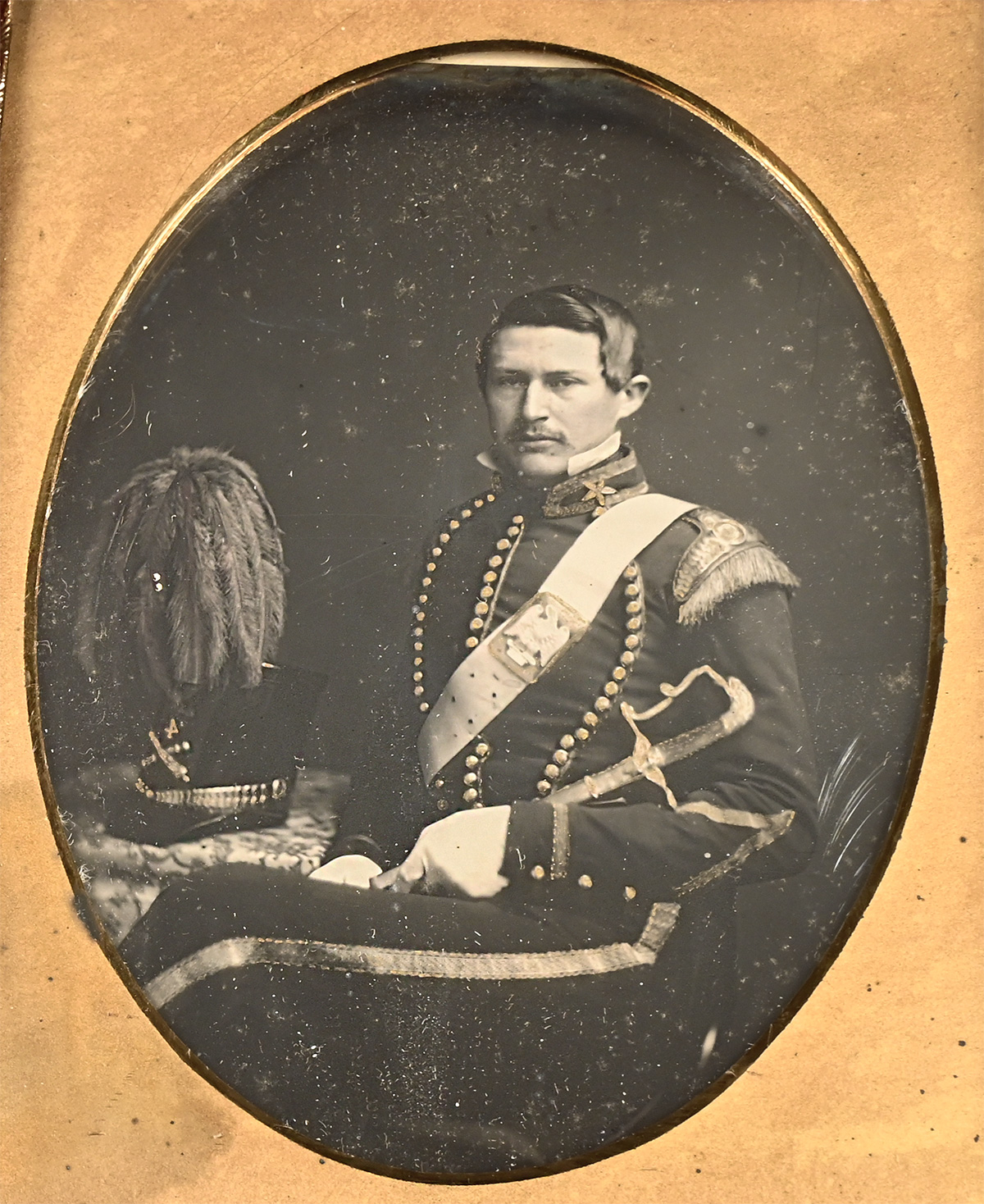
Hover to zoom

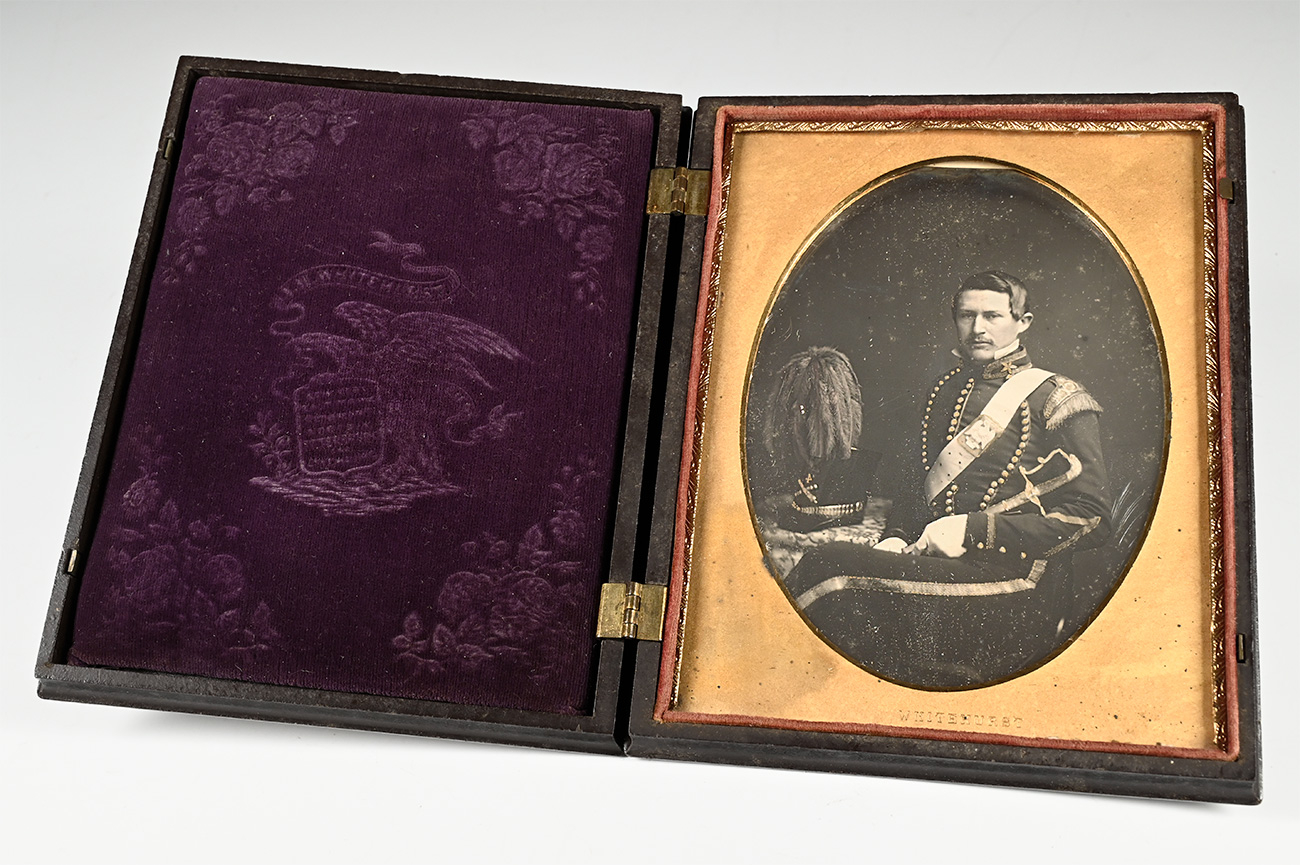
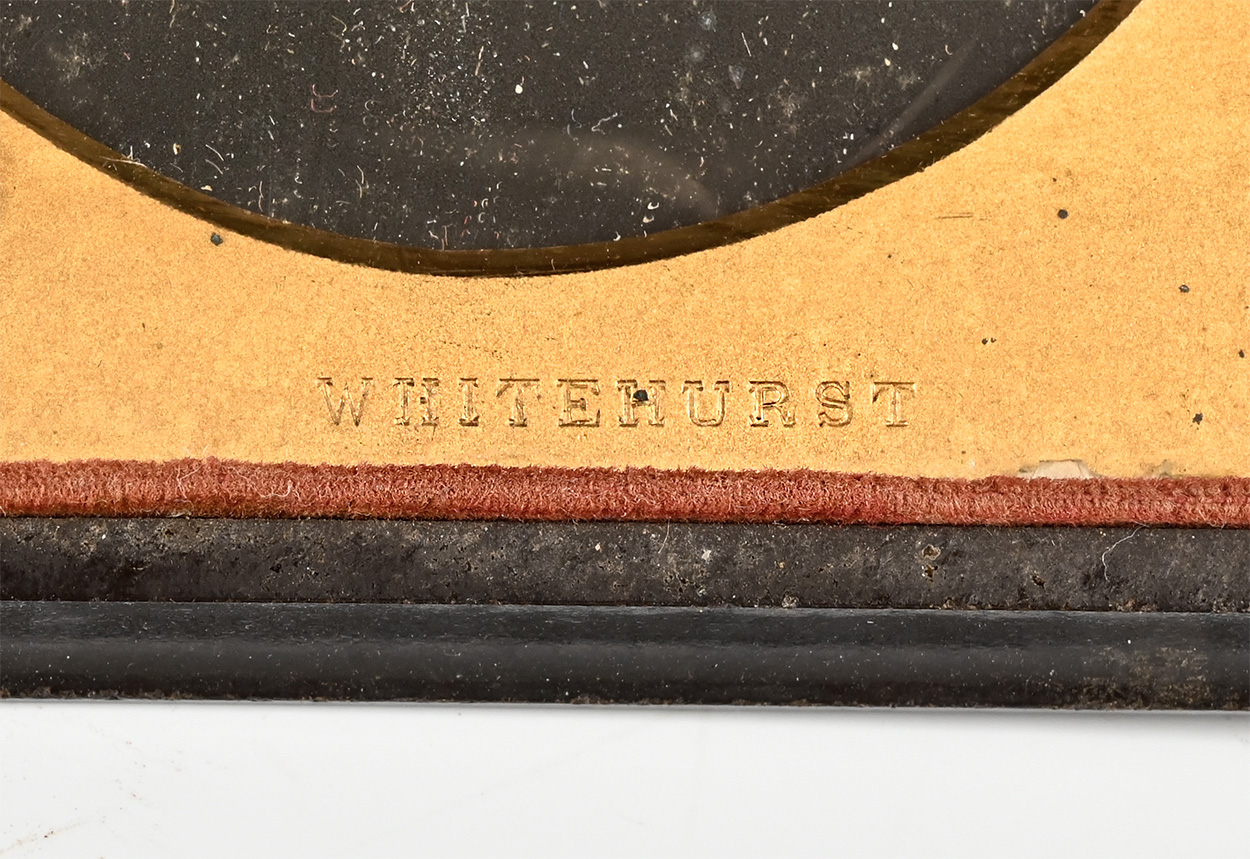
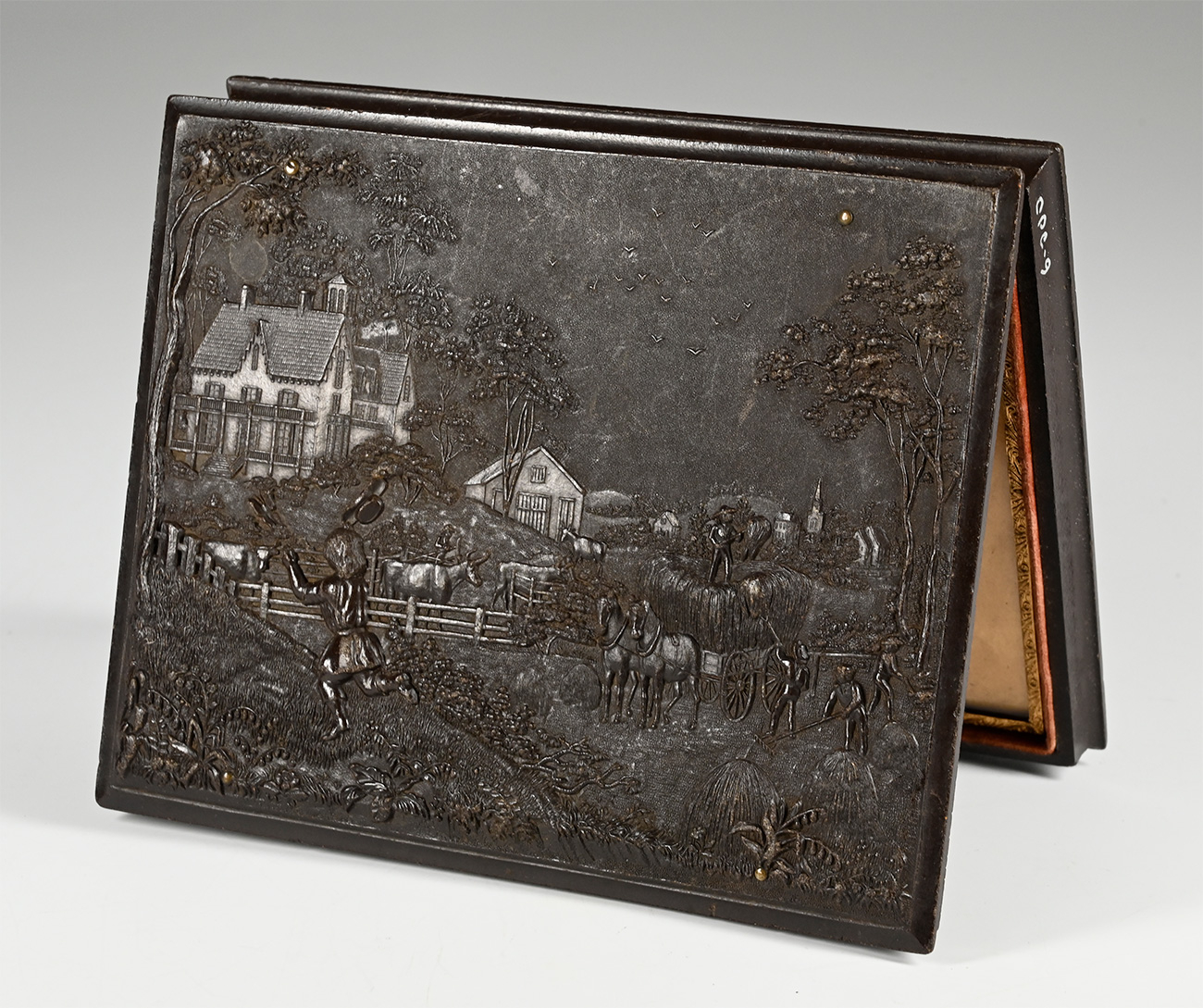
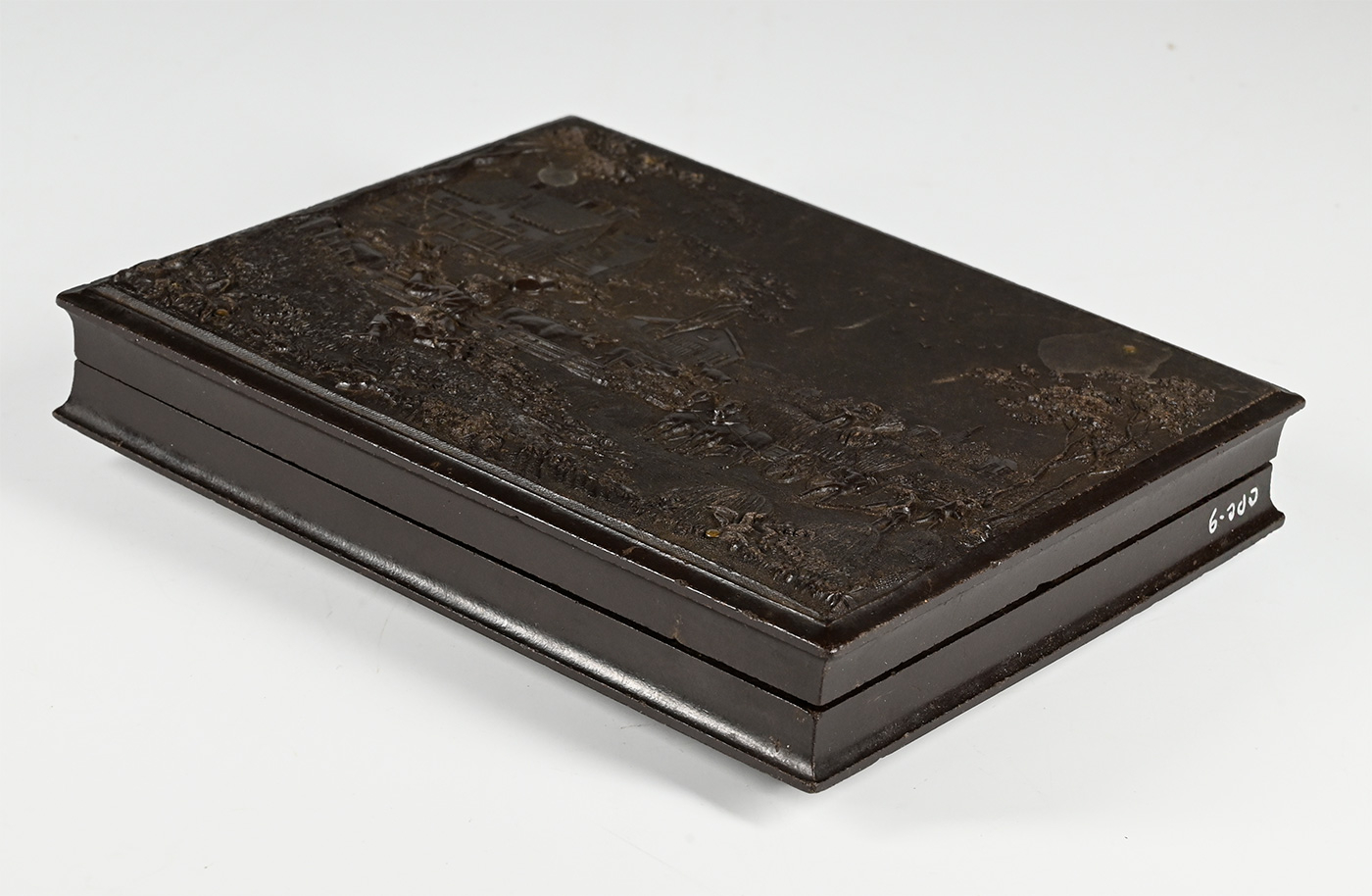
$7,500.00
Quantity Available: 1
Item Code: 1138-1799
This image is not only mounted with a Whitehurst marked mat, but has a full thermoplastic figural case with a purple velvet facing pad embossed with a large eagle flourishing a ribbon reading “J.H. Whitehurst” and holding a shield or plaque with his business locations. Jesse H. Whitehurst (1819-1875) was a pioneer in southern photography, opening his first daguerreian gallery in Charleston in 1843, and then returning to his native Virginia to open a chain of galleries in Norfolk, Richmond, Petersburg, and Lynchburg, as well as Washington, DC, Baltimore, New York, and elsewhere.
Whitehurst’s location in Norfolk, in his native Princess Anne County, made him a natural choice for the sitter, a young, mustached, militiaman seated for a half-length view, cradling an eagle-pommel sword. He wears an extravagantly trimmed triple-breasted jacket with fringed wings on his shoulders, used by the U.S. Army to 1832, but much long lived in the militia, and a five-pointed star on his collar, which has a braided border. He wears a wide, white shoulder belt fitted with a clipped-corner rectangular plate bearing a large Napoleonic style eagle, popular in the U.S. from about 1833 with its adoption for the U.S. dragoon helmet. Three buttons adorn his cuff, which has a line of braid circling it and an inverted chevron, likely a rank insignia, a little farther up the sleeve. His shako with tall plume and the numeral “4” over crossed cannons rests on the covered table beside him.
The Norfolk Light Artillery Blues was a militia company organized in September 1829 by gentlemen of the Borough of Norfolk. Their selection of artillery as branch of service was unusual, but likely inspired by the Portsmouth Light Artillery, based right across the Elizabeth River, who had served in the War of 1812. By February 1830 they had elected Mayor Miles King as their captain, selected dark blue jackets and trousers and black shakos for their uniform and paraded on Washington’s birthday on Feb. 22. As usual with ante-bellum volunteer militia companies most of their duty seems to have been ceremonial and social. They do not seem to have actually obtained a cannon until 1833.
Wiley, “Norfolk Blues,” describes their uniform at the beginning of the Civil War as differing, “only in slight details” from adoped in 1829: “a dark blue wool jacket and trousers, generously trimmed in gold cord and lace, and adorned with three rows of 20 brass buttons . . . ” (our emphasis.) He also mentions the use of white cross belts and a tall bell-crowned shako. Most significant is his reference to their adoption in 1860 of a kepi as a fatigue cap, which they adorned, “with crossed cannon barrels and a number “4” on the front denoting the 4th Virginia Regiment to which the company was assigned. “
Their uniform likely underwent several changes over the years with changing fashion, perhaps the wings were replaced by epaulets at some point, etc., but the principal elements in the photograph correspond with the description as does, most significantly, the shako insignia, and both fit the photographer’s location. About the only thing we might wonder about is that at this point they were using more than twenty buttons in each of the three rows on the jacket. Perhaps they became more conservative in dress as time went on. We would date this image to the later 1840s.
The photographer lightly gilded the buttons, star, shoulder belt plate, etc., as well as the edges of some braid to show it was bullion, but has not obliterated the details. Our man seems to be wearing white gloves, which had been consequently over-exposed, but are not distracting. The image is housed in a wonderful half-plate thermoplastic figural daguerreotype case showing a farm scene with hay wagon at right, house, barn, and cattle, and a running young boy at left. The case is in very good condition and has a white inventory number on one edge indicating it was in the collection of noted Virginia collector and dealer Bill Turner. The only defect is a missing section along the bottom edge of the thin gilt brass frame used to hold together the glass, mat, and plate for insertion into the case.
The Norfolk Light Artillery Blues were activated for Civil War service and took part in defending the head of Chesapeake Bay and served with the Army of Northern Virginia at Fredericksburg, Chancellorsville, Gettysburg and the 1864 campaigns, all the way to Appomattox. The company was reorganized in 1871 and integrated into the 111th Field Artillery in World War 1. They also have a dedicated plot in Norfolk’s Elmwood Cemetery.
Whitehurst’s photographs are known for quantity, some of his studios operated as franchises, and quality: his work received acclaim in the U.S. and abroad, including images of Niagara Falls and many of prominent American politicians and statesmen. He produced stereo daguerreotypes, ambrotypes, and even worked in paper images. The business seems to have suffered in the late 1850s and the last studio bearing his name apparently closed in 1863, sometime after he had ceased to be involved in the business. Reasons are not spelled out, but increased friction between north and south may have led him to cut ties. He seems to have lived in Baltimore from about 1849, but may have returned to Virginia at the beginning of the war in hopes of joining the army: a Jesse Whitehurst enrolled in Co. B of the 6th Virginia Infantry in Princess Anne County in August 1861. No further details are given, but that Jesse Whitehurst was sick when the company was mustered in late October and was “rejected” by the surgeon and discharged. If this was our Jesse Whitehurst, his age may have played a part. In any case, ever the businessman, former daguerreian Jesse Whitehurst later engaged in the guano trade and patent medicines until his death in 1875.
This is a wonderful image, in a scarce size, good condition, and interesting case, with a great association to Virginia and Norfolk in particular through both the maker and the subject of the photograph. [sr] [ph:m]
~~~~~~~~~~~~~~~~~~~~~~~~~~~~~~~~~~~
THIS ITEM, AS WITH ALL OTHER ITEMS AVAILABLE ON OUR WEB SITE,
MAY BE PURCHASED THROUGH OUR LAYAWAY PROGRAM.
CLICK HERE FOR OUR POLICIES AND TERMS.
THANK YOU!
Inquire About THE NORFOLK LIGHT ARTILLERY BLUES! IMPRESSIVE HALF PLATE DAGUERREOTYPE BY WHITEHURST IN A WONDERFUL WHITEHURST CASE
Most Popular
Historical Firearms Stolen From The National Civil War Museum In Harrisburg, Pa »
Theft From Gravesite Of Gen. John Reynolds »
Selection Of Unframed Prints By Don Troiani »
Fine Condition Brass Infantry Bugle Insignia »
Large English Bowie Knife With Sheath 1870’S – 1880’S »
Imported (Clauberg) Us Model 1860 Light Cavalry Officer's Saber »
featured item
10” CONFEDERATE COLUMBIAD CANNON-TREDEGAR IRON WORKS - FORMER TEXAS MUSEUM
This large cast-iron cannon was produced at the Tredegar Iron Works in Richmond, Va. In 1836, a group of Richmond businessmen and industrialists led by Francis B. Deane, Jr. set about to capitalize on the growing railroad boom in the United… (1268-1240). Learn More »


